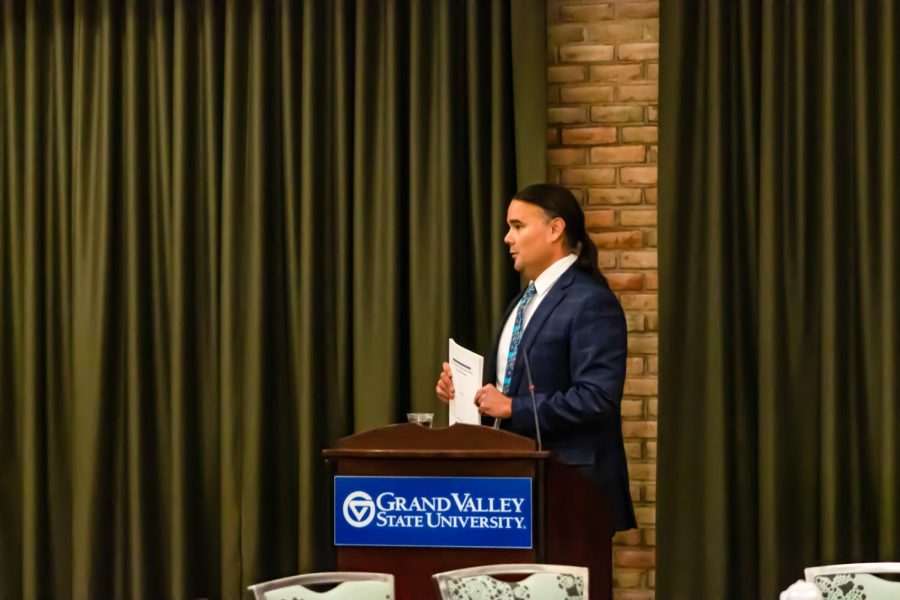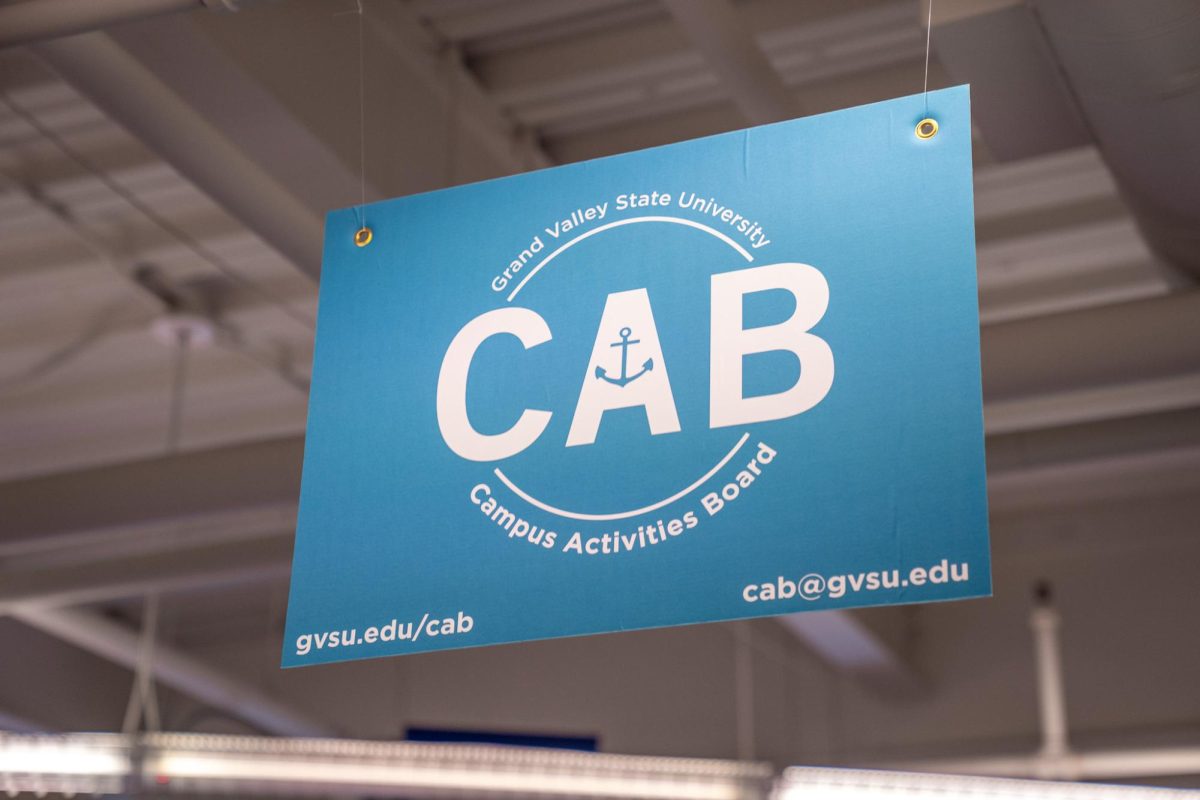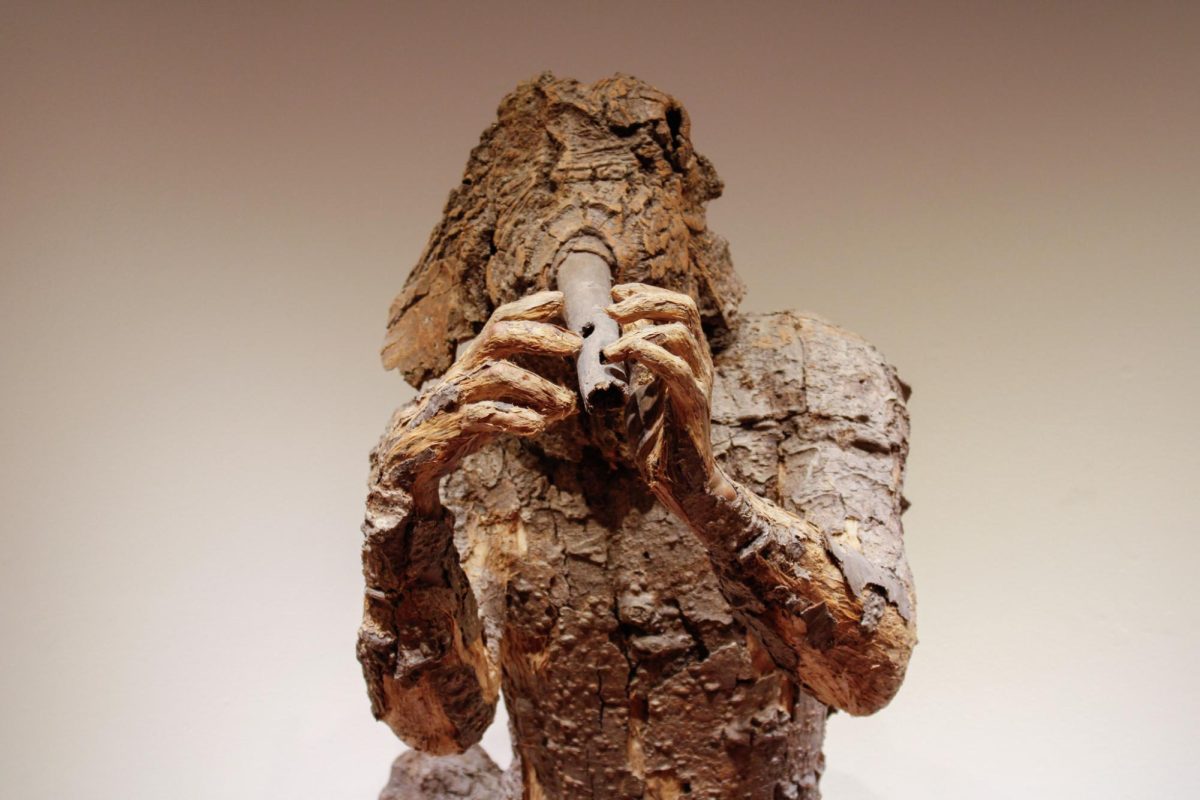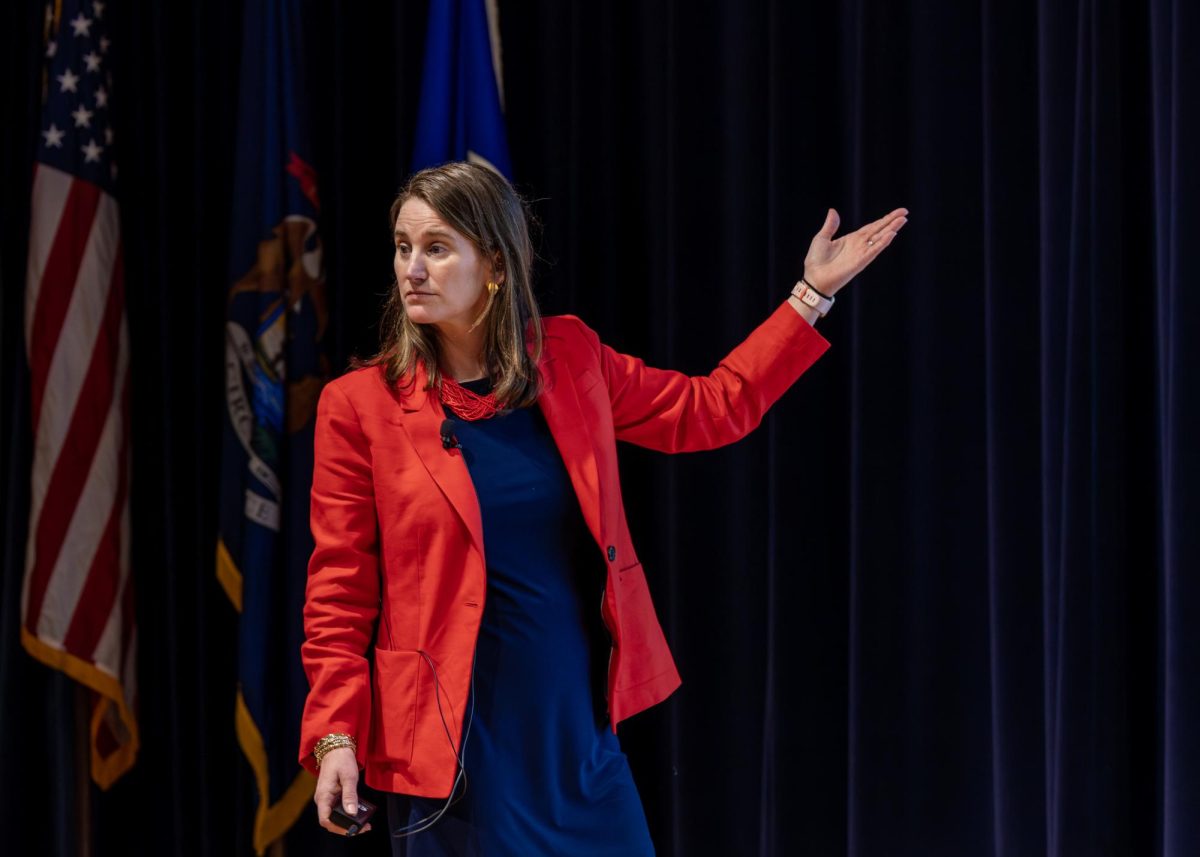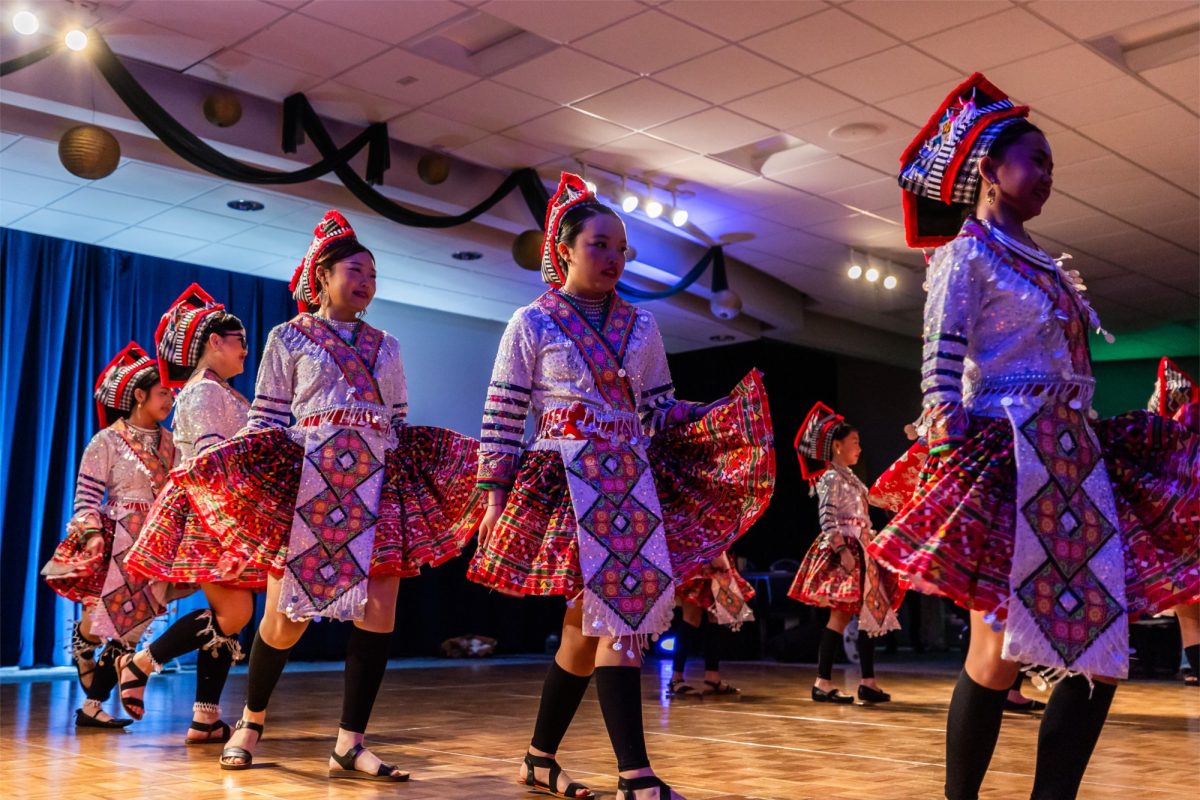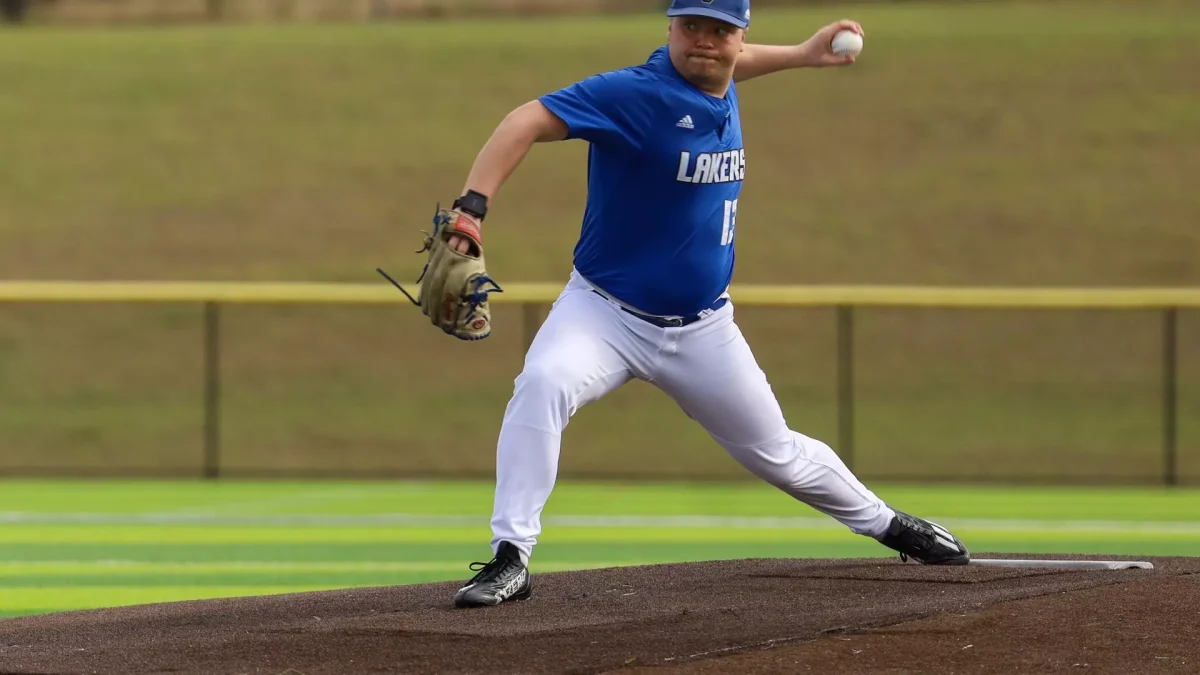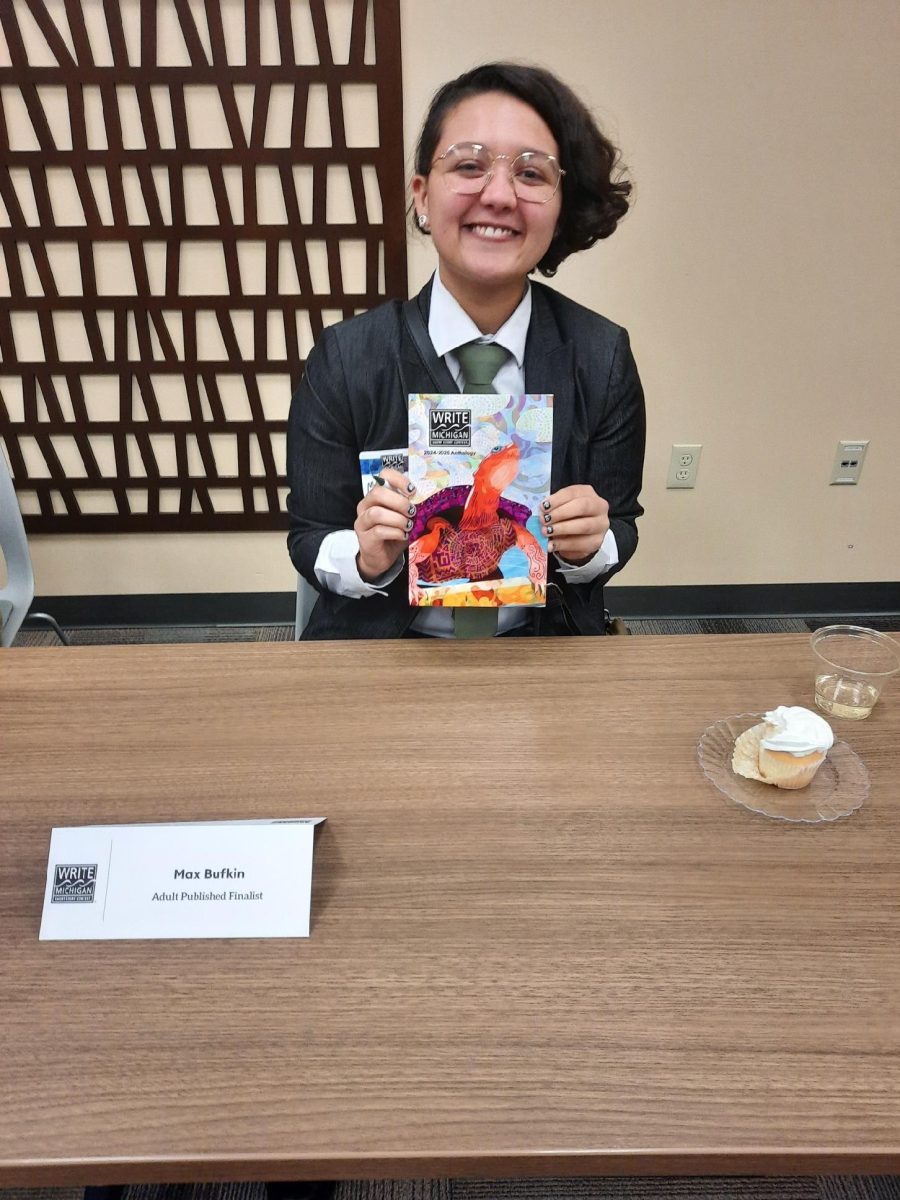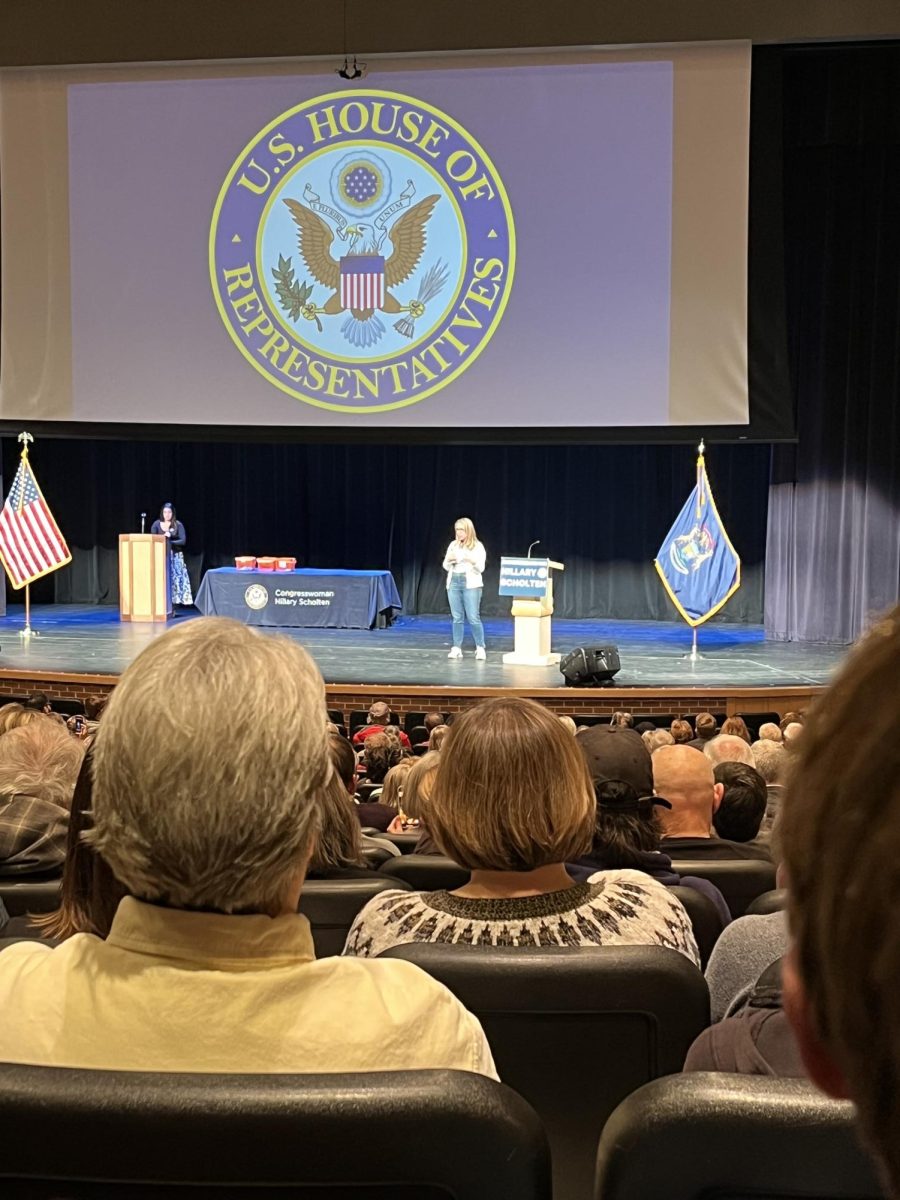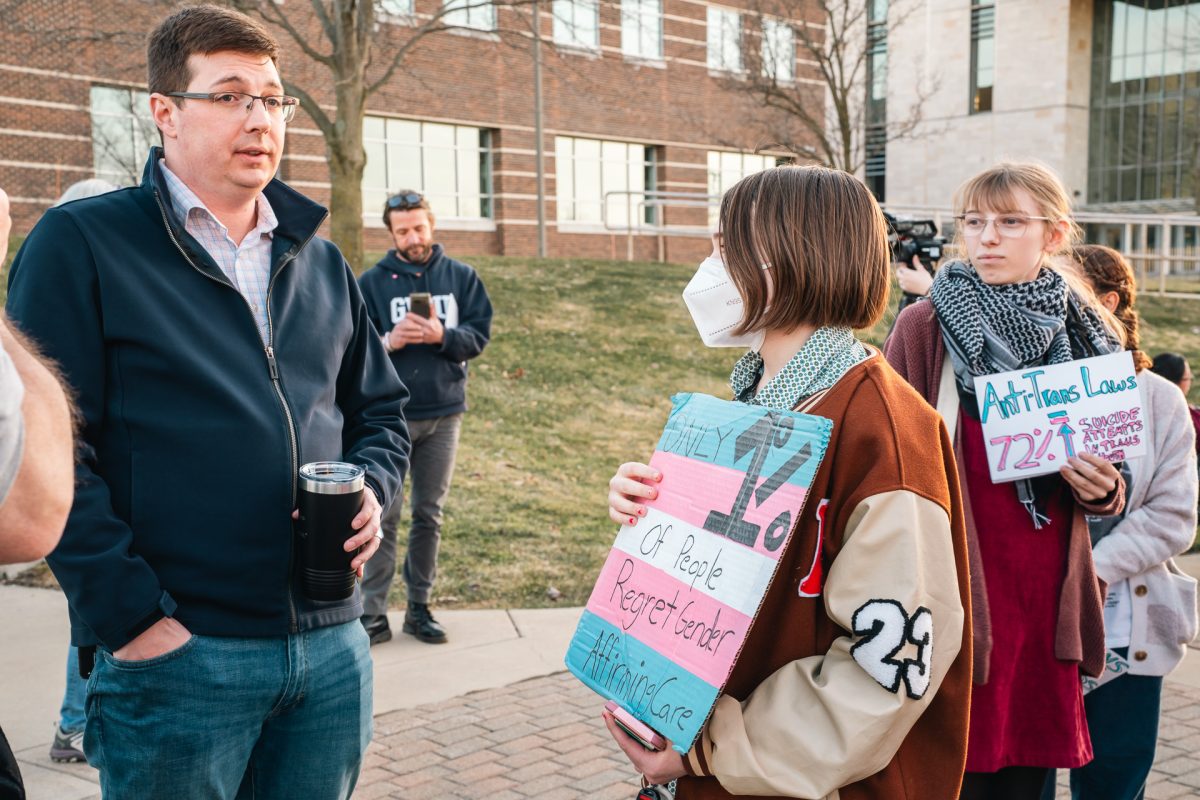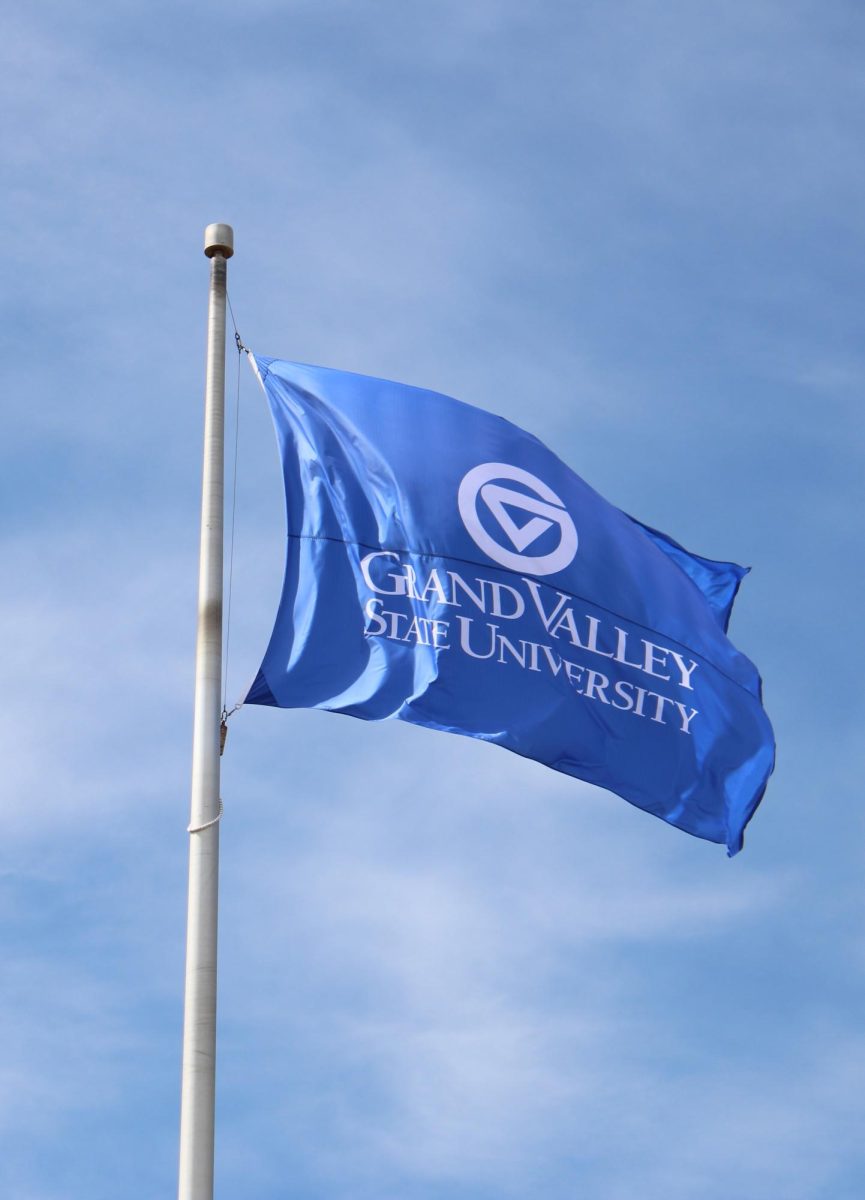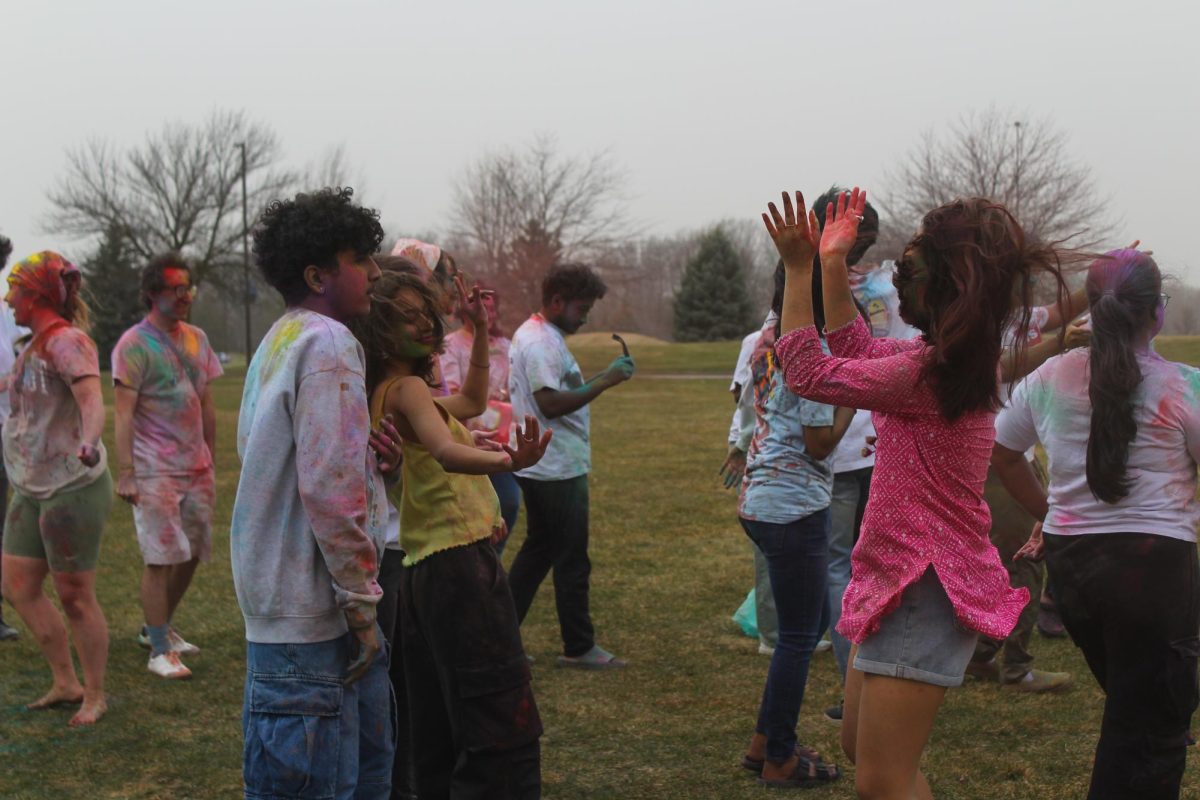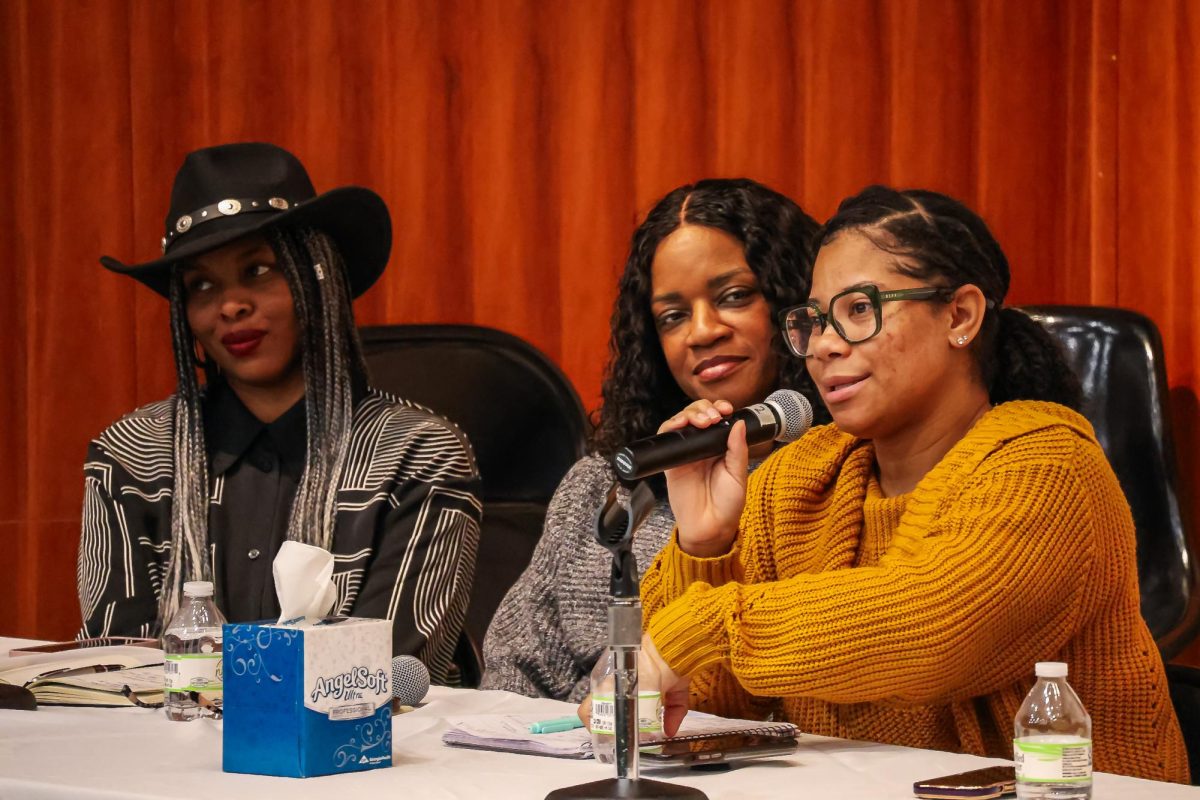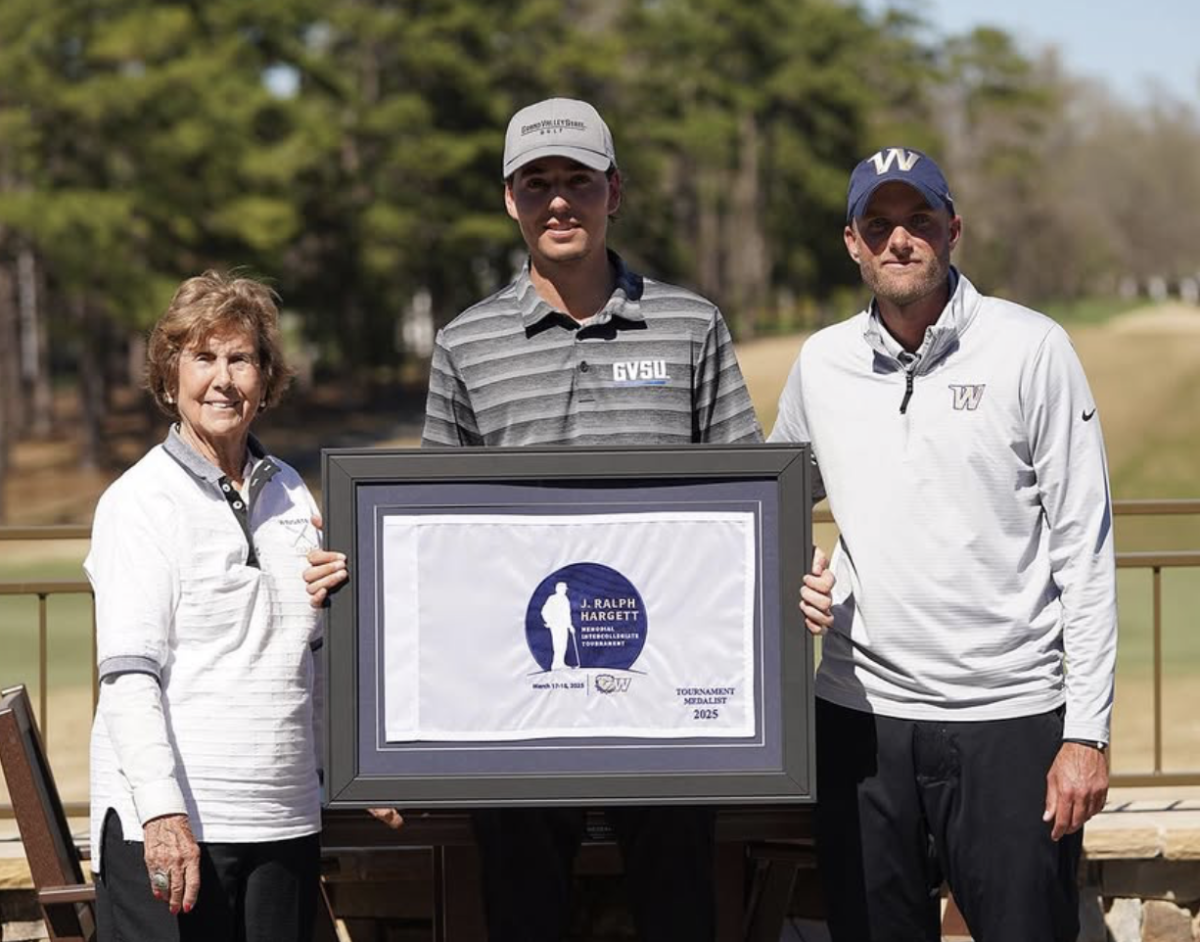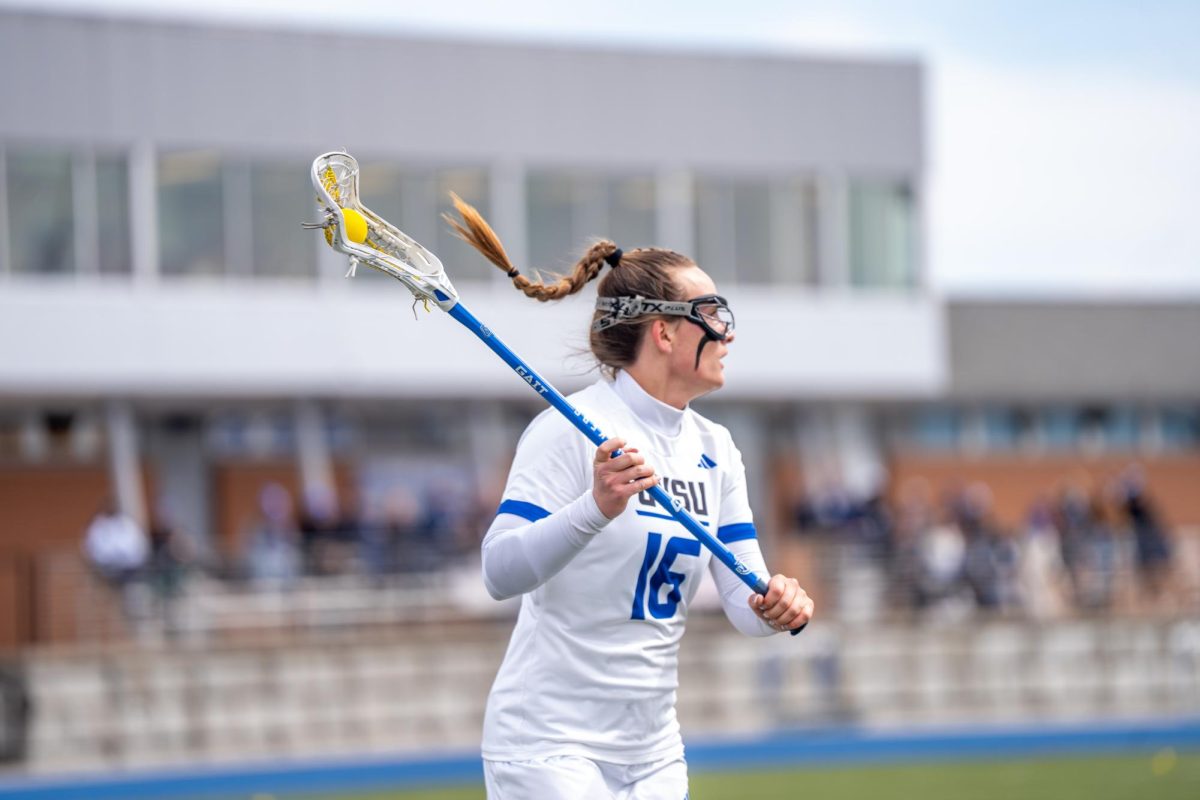U.S. Assistant Secretary of the Interior for Indian Affairs speaks at GV
Oct 31, 2022
On Oct. 27, Grand Valley State University hosted U.S. Assistant Secretary of the Interior for Indian Affairs, Bryan Newland, at the Eberhard Center in downtown Grand Rapids.
To begin the panel, Newland told the audience about why his position exists.
“I often get asked ‘Why do you have your job?’” Newland said. “Well, it’s because it’s in the Constitution. That’s why we have this bureau. This bureau is one of the oldest federal agencies there is; it’s older than the Department of the Interior, the Department of Education and the Department of Homeland Security.”
Newland, a member of the Bureau for Indian Education (BIE) and a Michigan State University alum, provided those in attendance with background on Native American history following the arrival of the Europeans in the 1800s.
“Some of the very first federal laws that America passed were related to Indian affairs,” Newland said. “The Bureau of Indian Affairs’ job as a trustee was to decide what was best for Indian country, and what the federal government decided was that it was best if Indian people didn’t exist.”
In efforts to erase Native American culture, the federal government created boarding schools for Native American children. In reference to these boarding schools, General Richard Henry Pratt (1840-1924) said their main purpose was to “kill the Indian but save the man.” Between 1819 and 1969, the U.S. government took Native American lands and forcibly assimilated children by requiring families to send them to these boarding schools.
“There was rampant physical, emotional and sexual abuse of kids at these schools,” Newland said. “We also found that the school system used militarized identity alteration methods to force Indian kids to change.”
It wasn’t until 1978 that the Indian Child Welfare Act (ICWA) was passed, which stated that the government would stop targeting Native American children for assimilation, and instead would ensure that the children stay with their families. Following that legislation, the Native American Religious Freedom Act (NARFA) and the Indian Self-Determination and Education Act (ISDEA) were passed to give more freedom to Native American tribes.
On May 11 of this year, 408 Native American boarding schools were investigated and identified in the first-ever Federal Indian Boarding School Report. Newland explained that this was the first time the federal government has held itself accountable and acknowledged the horrors of these boarding schools.
“It’s only been in my lifetime that the U.S. government has repudiated those harmful policies,” Newland said. “We are in a new era, relatively speaking. We are embracing this new policy era where we ensure that tribes can govern themselves and continue to exist as Indian people.”
The success of the ICWA, NARFA and the ISDEA prove that the U.S. government’s constitutional powers can be used to help Native Americans.
“We have an obligation to remake, restore and revitalize the tribal way of life in partnership with tribes,” Newland said. “This is what the U.S. trust responsibility is, it means we work in partnership with tribes, not to destroy, but to revitalize.”
The U.S. government has taken large steps towards this goal in recent years, including $31 billion sent to tribal communities as part of the American Rescue Plan passed last year – the largest investment allocated toward the Native American community in American history.
“We have a lot of people out there who are fine with returning to an era where Indian children are taken from their communities and their families,” Newland said. “This administration is defending the ICWA against those lawsuits in front of the Supreme Court in two weeks. We are going to do everything we can to ensure that it remains the law.”
Though many Native advocates believe the U.S. still has far to go in repairing the damage done to Native American tribes throughout its first two centuries of existence, Newland’s hope is to encourage a sense of optimism in the audience about the future of Native American affairs through his presentation.
“We’re not all the way there; we’re not even a little bit of the way there, but we are starting,” Newland said. “It’s a partnership with the federal government. We believe that the federal government’s Indian powers cannot exist only to do bad things. They must also be available to us to rebuild, repair, and restore. It’s our responsibility to do just that.”





